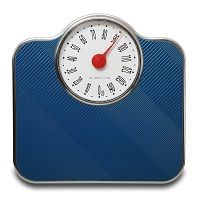Article
Traditional Dieting, Alternate Day Fasting Similar For Weight Loss in Head-to-Head Trial
Author(s):
A small but rigorous 6-month randomized, controlled parallel arm trial comparing alternate day fasting and daily calorie restriction showed that each approach can result in significant weight loss for individuals who are overweight or have obesity, with similar adherence between the two methods of dieting.

A small but rigorous 6-month randomized, controlled parallel arm trial comparing alternate day fasting (ADF) and daily calorie restriction (CR) showed that each approach can result in significant weight loss for individuals who are overweight or have obesity, with similar adherence between the two methods of dieting. John Trepanowski, graduate student in Kinesiology and Nutrition at the University of Illinois-Chicago, discussed study design and implications for further work during Obesity Week on November 7, 2014 in Boston, MA.
ADF is an alternative to conventional CR dieting. Whether ADF offers adherence benefits over CR with similar levels of calorie intake has not been thoroughly studied. By providing a controlled diet to CR and ADF dieters, and by using rigorous methods to verify energy intake, Trepanowski and collaborators were able to provide objective verification of dietary adherence and compare weight loss in each group.
The study enrolled sedentary subjects ranging in age from 18-65 and overweight or with obesity (BMI 25-40). Individuals with cardiovascular disease or diabetes, who were currently smoking, or who were on medication for weight control or glucose or cardiovascular risk management were excluded.
Enrollees (n=28 ADF, 28 CR, and 24 control) were randomized to receive a controlled diet with 75% of daily energy needs each day (CR group), to receive a diet that alternated providing 25% and 125% of daily energy needs (ADF group), or to receive dietary counseling alone. Thus, each intervention group was prescribed 25% average daily energy restriction for the duration of the study. Both groups received a balanced macronutrient diet with approximately 30% fat, 55% carbohydrate, and 15% protein. After a four week run-in to establish baseline measures and weight stability, subjects were provided meals for 12 weeks and then had 12 weeks of a self-selected diet, with intensive weekly diet counseling.
Participants’ energy intake was measured through the doubly labeled water protocol, which at study outset had subjects drink a specified volume of water composed of an isotope of hydrogen, deuterium, and the isotope oxygen-18. Tracking excretion of these non-radioactive isotopes in urine provides an accurate picture of body metabolism over time, and when combined with measuring changes in body composition, yields precise information about overall energy intake and expenditure. Fat mass and fat-free mass were evaluated using DEXA.
Both intervention groups came close to meeting the primary outcome measure of achieving 25% energy restriction (ADF 23+/-6%, CR 23 +/- 4%, p=0.90). This amount of energy restriction translated into significant and similar weight loss for both intervention groups (ADF, -8.1 +/- 1.5 kg; CR -7.1 +/- 0.9 kg, p=0.53). Fat mass decreased similarly in both intervention groups (ADF, -5.8 +/- 1.1 kg; CR -5.4 +/- 0.6 kg, p=0.80). There was no significant change in fat free mass in either group, nor did lipid profiles change significantly in either group. Though blood pressure was reduced in both intervention groups, the amount did not reach statistical significance.
Future directions may involve examining relative benefits of ADF versus CR in higher risk populations, such as those with medication requirements for dyslipidemia or diabetes. The present study, Trepanowski emphasized, does not show clear benefit of one calorie restriction method over the other when overall energy restriction is similar. Patients without contraindications may thus choose the diet strategy they will find easiest to follow.




